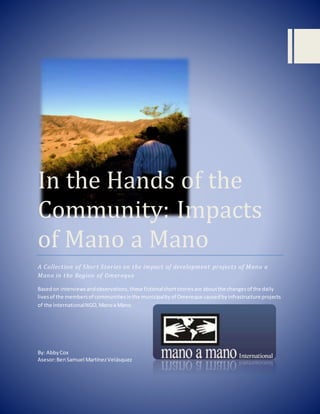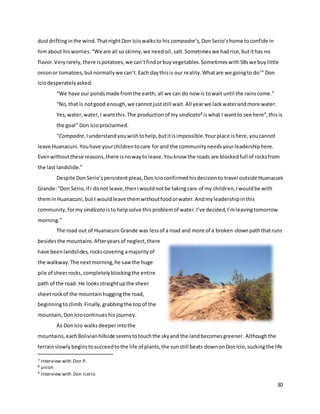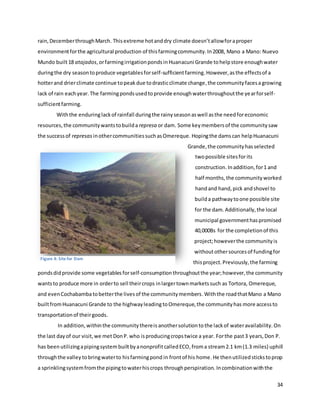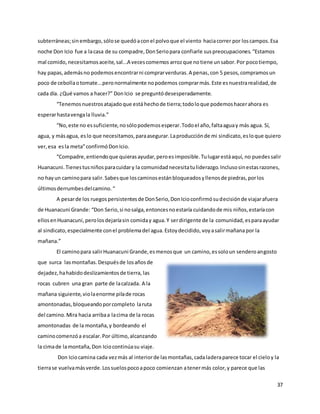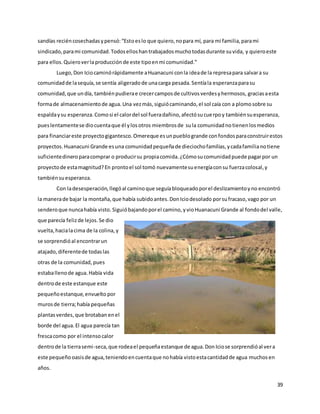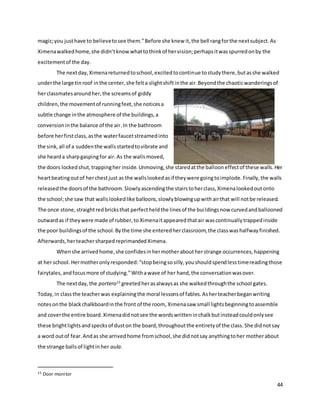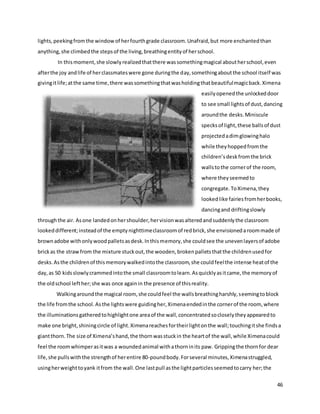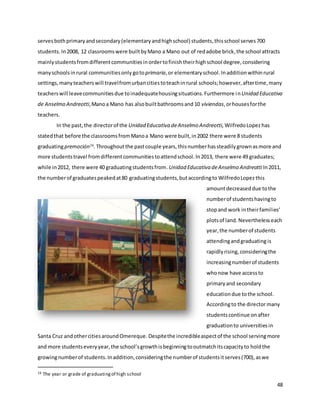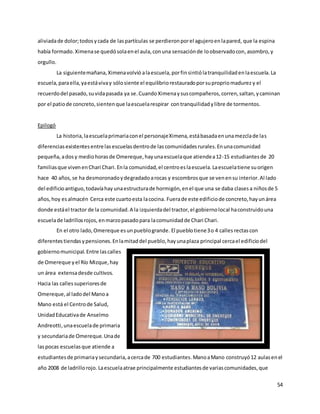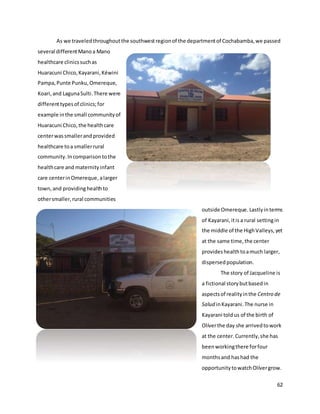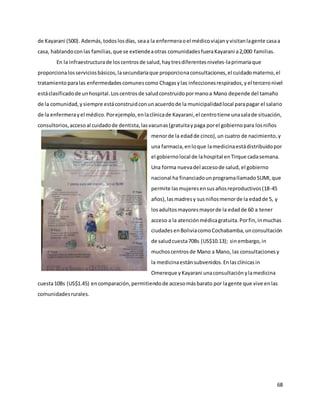Este documento presenta cuatro cuentos ficticios basados en proyectos reales de desarrollo rural de Mano a Mano en la región de Omereque, Bolivia. Los cuentos examinan cómo proyectos de atajados, escuelas, centros de salud y un puente han mejorado las vidas diarias de los miembros de las comunidades de Huanacuni Grande, Omereque, Kayarani y Chari Chari al proveer acceso a recursos agrícolas, educación, salud y transporte. A través de estas historias,
